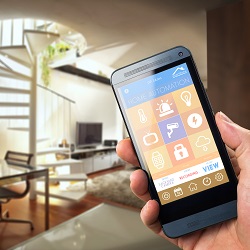 More everyday items are being manufactured with access to the internet where they are able to identify themselves to other devices. The data generated is being exchanged among this network of physical objects and has been defined as the “Internet of Things”. Gearing up to be the world’s most massive device market the Internet of Things (IoT) is the latest movement of technological change that will bring unprecedented opportunities. Innovators and entrepreneurs are aggressively working to create and develop products that embrace this new wave as we watch the internet as we know it today begin to transform.
More everyday items are being manufactured with access to the internet where they are able to identify themselves to other devices. The data generated is being exchanged among this network of physical objects and has been defined as the “Internet of Things”. Gearing up to be the world’s most massive device market the Internet of Things (IoT) is the latest movement of technological change that will bring unprecedented opportunities. Innovators and entrepreneurs are aggressively working to create and develop products that embrace this new wave as we watch the internet as we know it today begin to transform.
As technology becomes more integrated into our lives the internet of the future will subsequently mature to be more of an experience rather than a tool. Google’s chairman, Eric Schmidt, describes his prediction of the internet as being “part of your presence all the time.” He continued with painting a picture of the future saying, “Imagine you walk into a room and the room is dynamic. And with your permission and all of that, you are interacting with the things going on in the room2.”
Smart devices are being designed to control your sound systems, thermostats, locks, lights, surveillance cameras, and more. Between wearables, smart homes and self-driving automobiles the International Data Corporation (IDC) predicts approximately 32 billion objects will be connected to the internet by 2020 and these objects will produce ten percent of all data generated worldwide1.
While the innovation and convenience is exciting the security isn’t at the level it needs to be. Hewlett-Packard (HP) recently conducted a study to test the security of ten different internet-connected devices. In this survey they found these devices had an average of 25 vulnerabilities and nine out of ten devices contained personal data including, in some cases, credit card details1. In fact, Target’s major data breach that affected 100 million Target customers was likely taken from the retailer’s HVAC service provider. This vendor had access to remote into Target’s HVAC system for maintenance and upgrades, and this system was also connected to the company’s central servers.3 Therefore, hackers likely went this route for the point-of-sale (PoS) attack.
As we think about these data-sharing and internet-connected devices the future of technology seems a little chaotic and frightening. As technology leaders continue to create the next big thing the IT asset disposition (ITAD) industry prepares for a new era of devices that will be received for end-of-life management. As we explore new processes for responsible reuse and recycling one thing we know for certain is security considerations are going to affect a much wider range of devices, and will become more critical than ever.
Watch this webinar for information on how to securely manage the disposition of IT equipment.
Sources:
- http://www.siemens.com/innovation/en/home/pictures-of-the-future/digitalization-and-software/internet-of-things-facts-and-forecasts.html
- http://www.forbes.com/sites/timworstall/2015/01/24/eric-schmidts-quite-right-the-internet-will-disappear-all-technologies-do-as-they-mature/
- http://www.infosecurity-magazine.com/news/target-hackers-may-have-gotten-in-through-the-air/
- http://www.forbes.com/sites/sungardas/2015/04/08/home-security-2015-the-internet-of-things-iot-brings-innovation-and-danger/